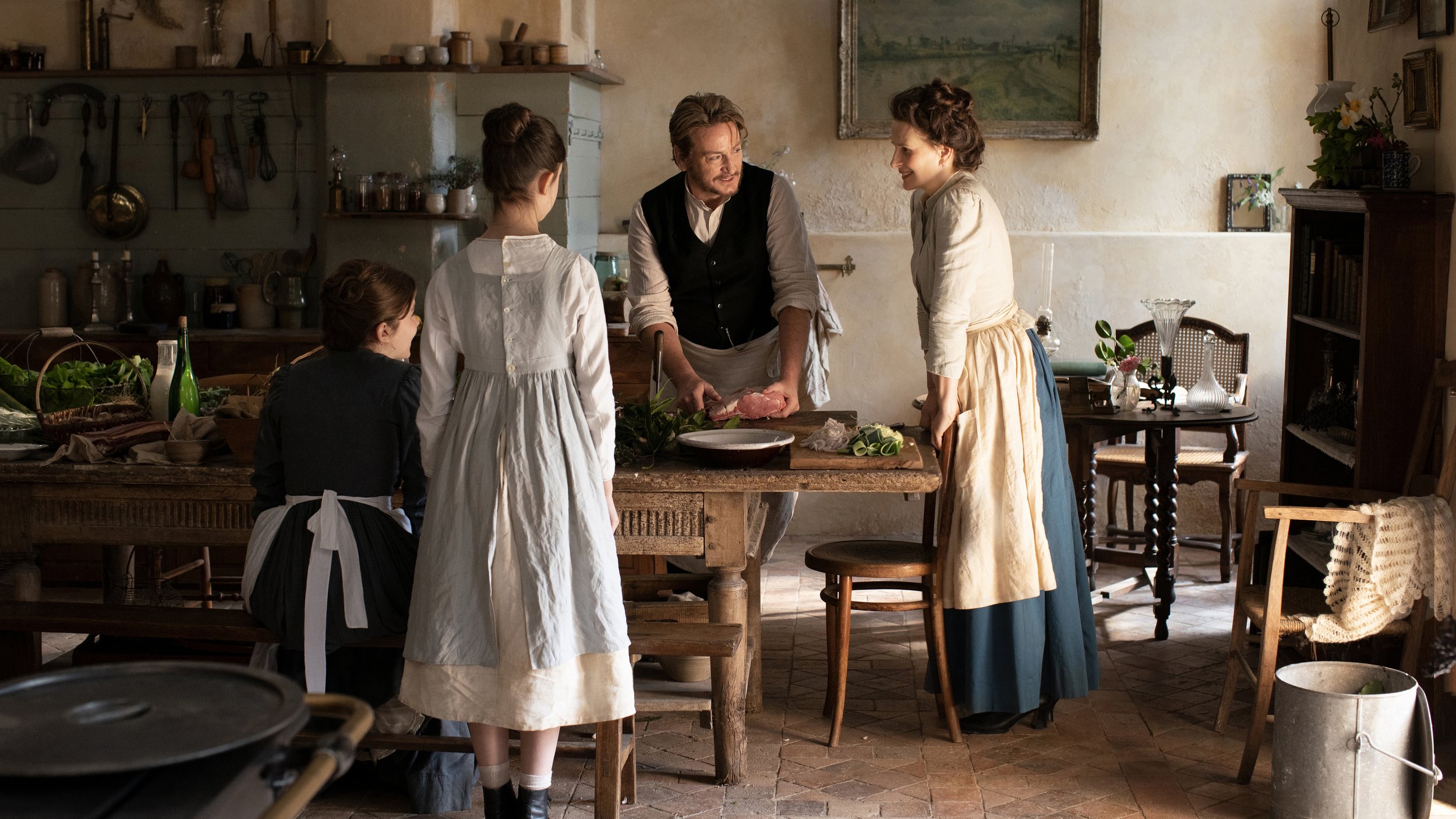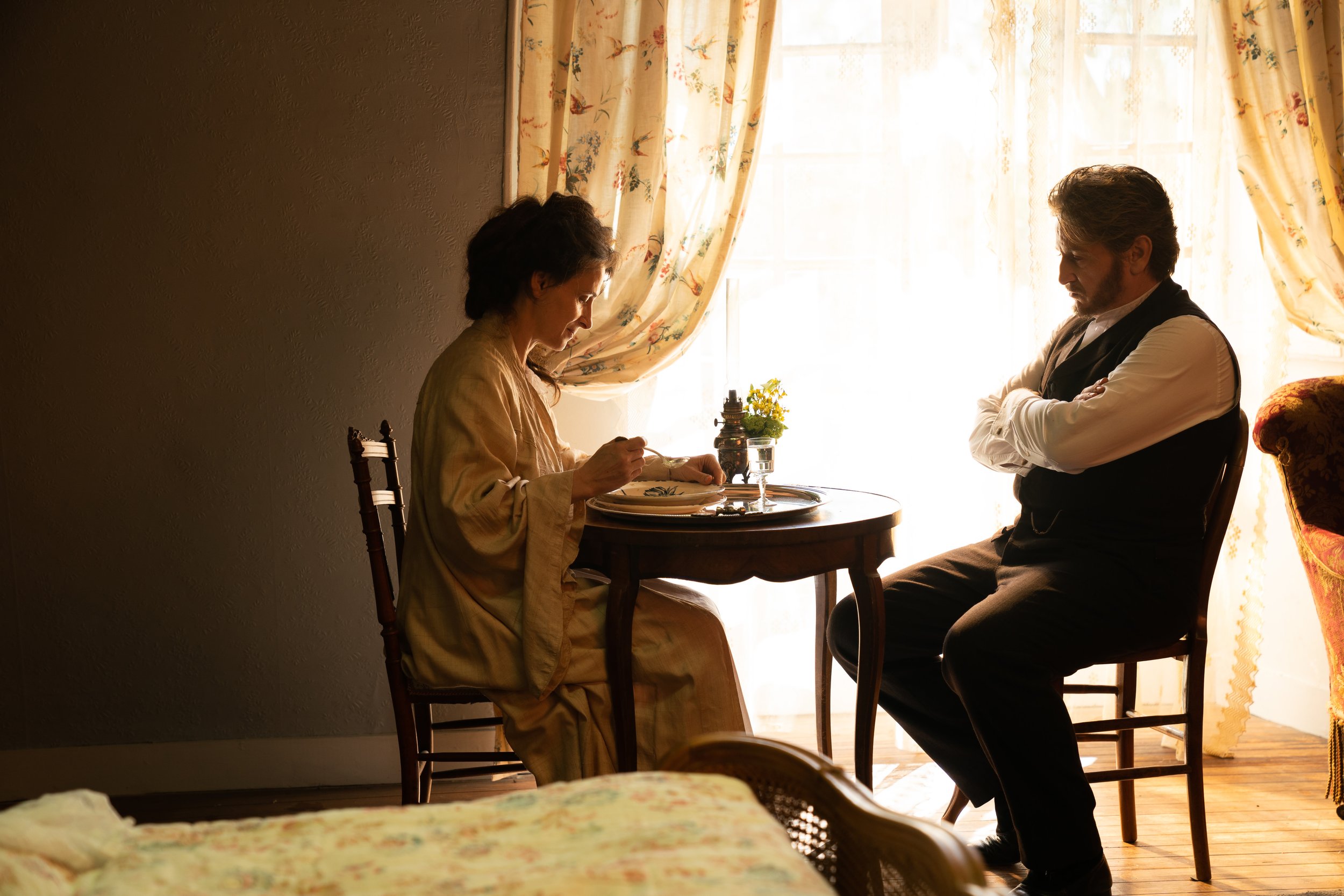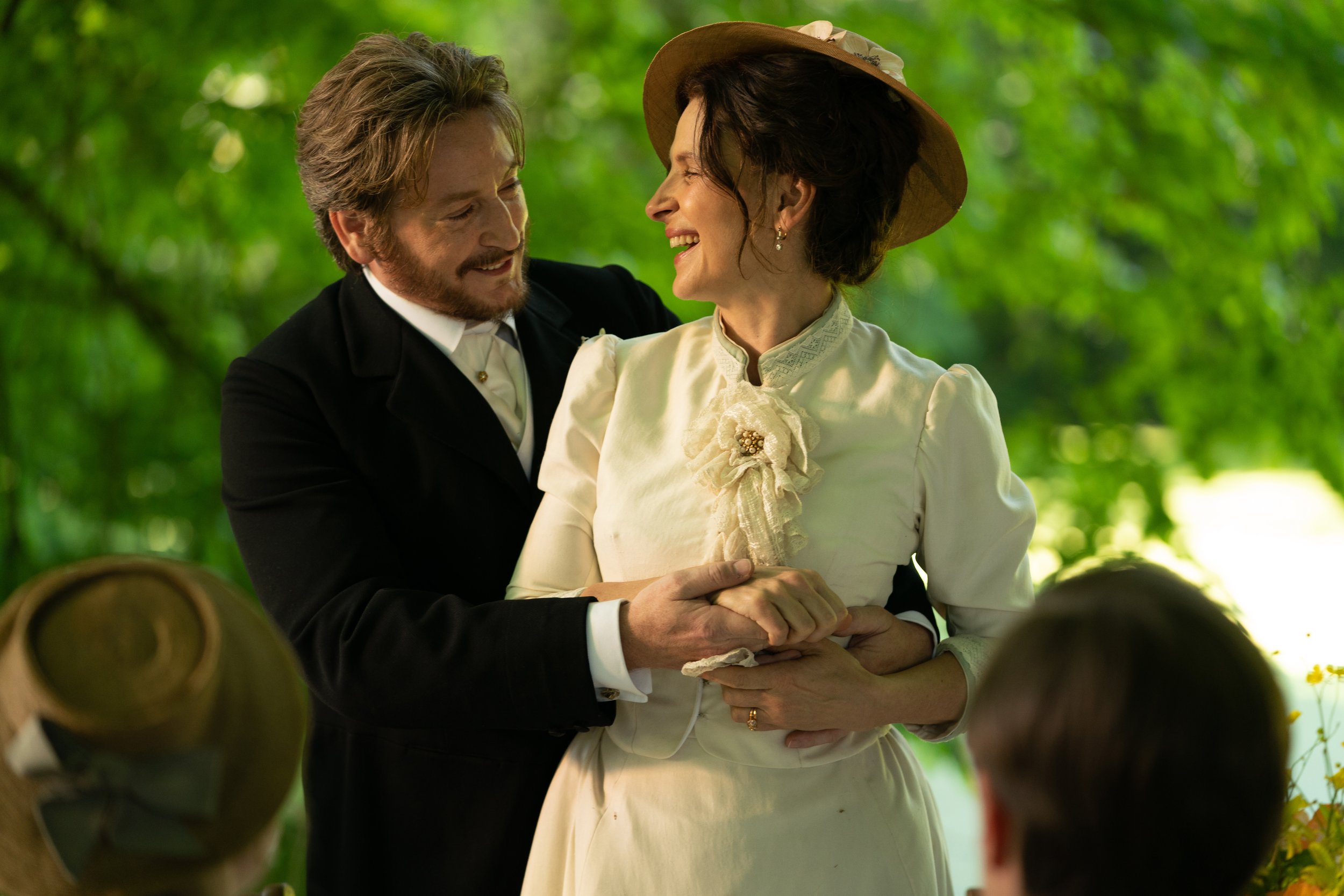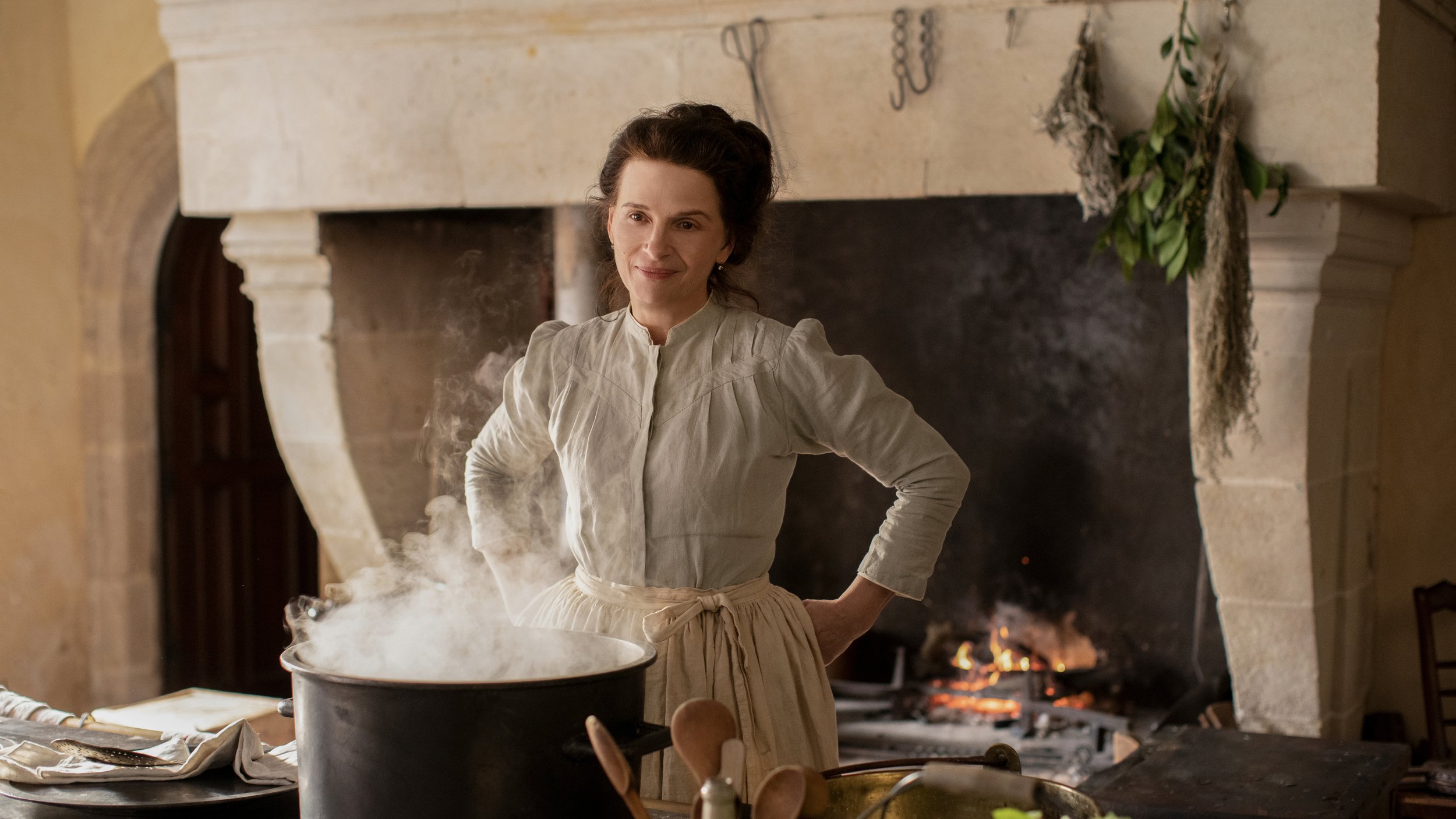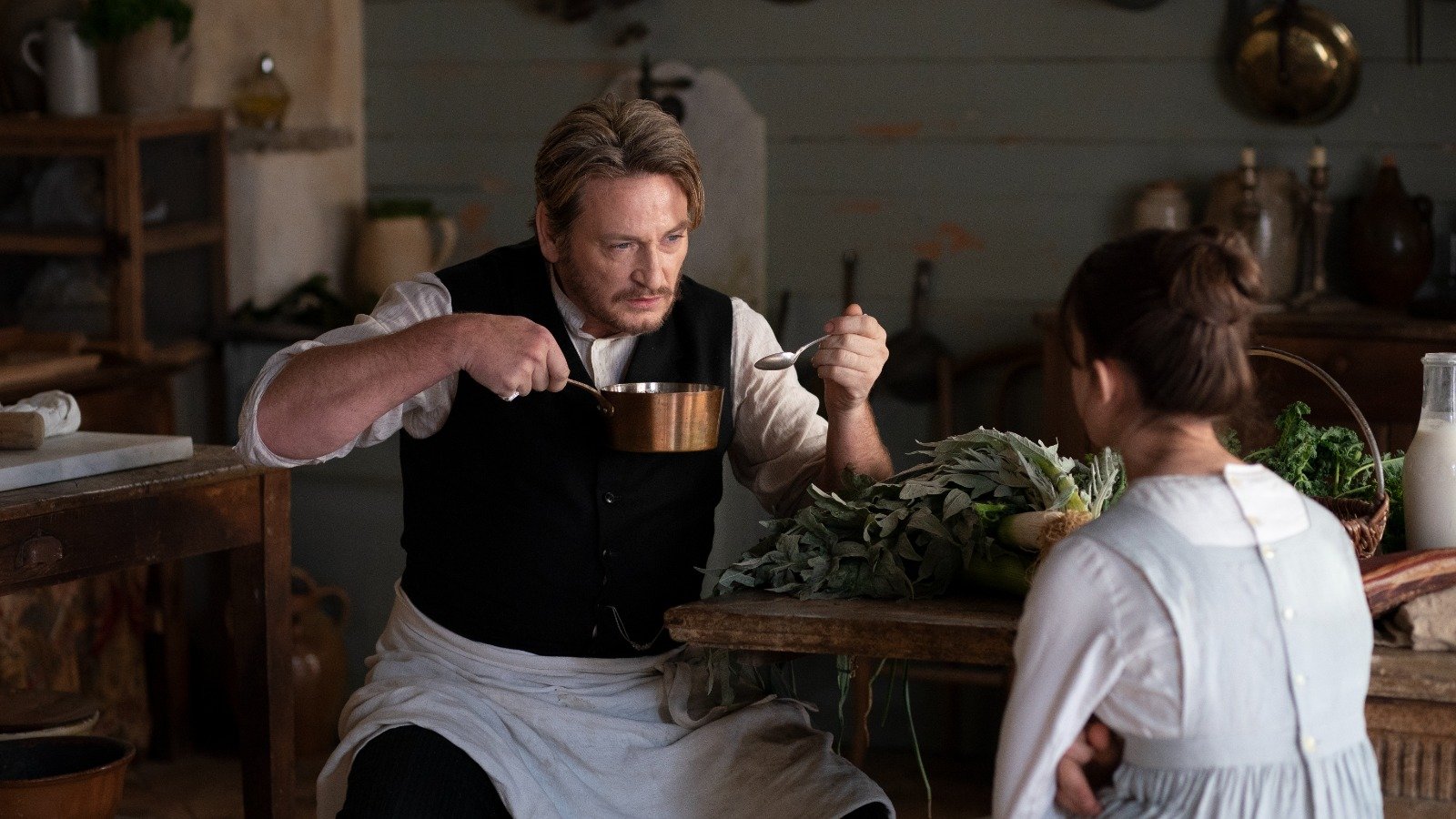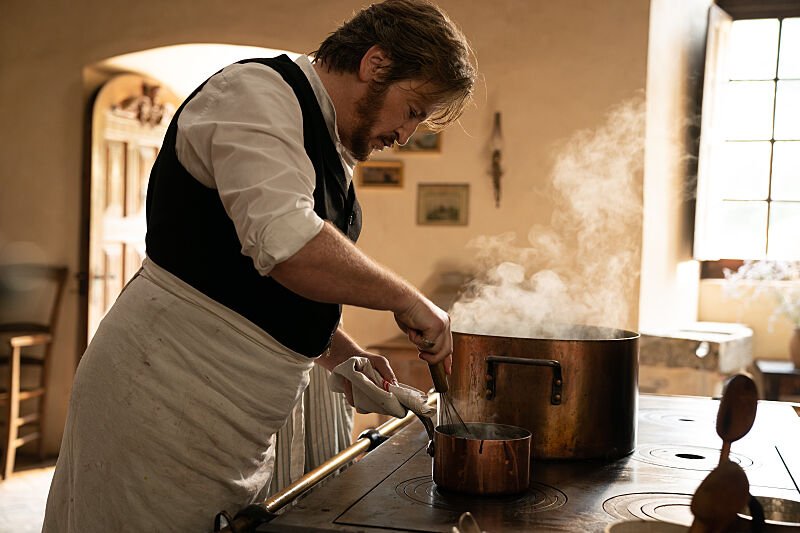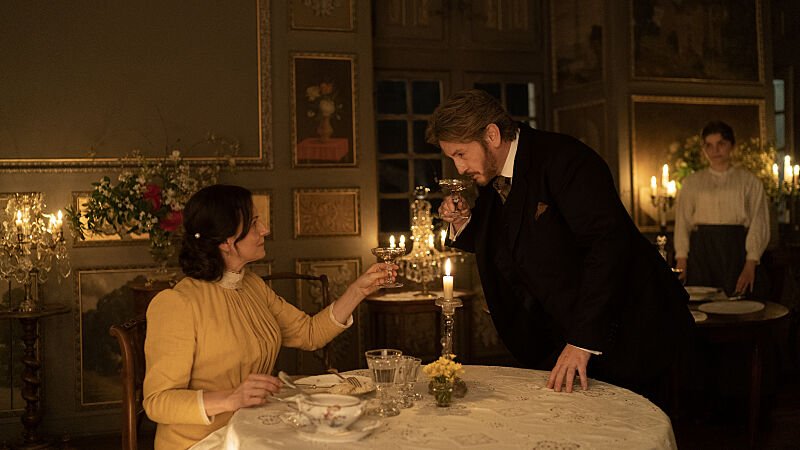MOVIE REVIEW: The Taste of Things
THE TASTE OF THINGS– 4 STARS
LESSON #1: FOOD WILL GET US EVERY TIME– Let’s be honest. A film that includes a scene with food being prepared or eaten knows exactly what it’s doing. One’s carnal urge for sustenance is never off. We see Brad Pitt eating in Ocean’s 11 and want what he’s having, even if it’s a chip from a bag. A viewer could have had the most gluttonous and filling meal of their life before watching The Taste of Things and they would still find themselves craving what they see on screen. Food is an excellent gateway trigger to engagement but is also, as this film poetically presents, one of the grandest metaphors for so many other aspects of life along the way.
The first moving image of The Taste of Things is a large rooted vegetable being picked from a garden, inspected, and trimmed in the early morning light. More and more fresh ingredients are gathered by chef Eugénie (Academy Award winner Juliette Binoche), host and fellow chef Dodin Bouffant (three-time Cesar Award winner Benoît Magimel), and their kitchen assistant Violette (Golden Youth’s Galatea Bellugi). Those who know their way around a kitchen can appreciate the basis of future flavor beginning right there with the roots and preparation.
LESSON #2: MARVEL AT OLD WORLD COOKING– The year is 1885, meaning there’s not a modern gadget, faucet, smoke alarm, or electrical plug outlet in sight in Dodin Bouffant’s homespun kitchen. Pails of water are pulled from buckets cranked up from a yard well Jack-and-Jill style. Simple tools like sieves are used and no two bowls or utensils are alike. A wall-set fireplace hearth secures a hanging tripod pot and heats one stone-sided oven. An elaborate cast iron island stove in the room’s center features more oven chambers and six top burners fed by one central fire. Nearby is a small wine nook holding coveted bottles and a sealed metal box of precious crushed ice surrounding a hand-cranked ice cream maker.
Clear as day, a big meal is in the works and we are here for it. The first 17 minutes of The Taste of Things follows the kitchen team’s diligent work in and around these rustic accouterments to prepare a multiple course meal of exquisite variety. Dish after dish manifests themselves from crude raw ingredients to plated perfection right before our eyes. The next 14 or so minutes show the assembled well-to-do guests (prominently including Emmanuel Salinger and Patrick d'Assumçao) of Dodin partaking in the finished culinary treasures ranging from roasted veal to baked Alaska. Their sublime reactions of approval generate a waiting stares and a wry smile from Dodin, who knows full well what beauty is being consumed.
Here’s the thing about watching this meal come together at the beginning of The Taste of Things. Normally, due to the time-sensitive delicateness and preciseness required for actual cooking versus the massive amount of time and effort needed to light, dress, and stage a filmed scene (let alone several) for a film or television show, most food preparation needs to be “faked,” so to speak, with edited insert shots or obvious pre-prepared food standing-in. In The Taste of Things, you cannot readily see, if they are present, those puppet strings or off-screen shortcuts. The actors are stirring, straining, simmering, and serving the actual—if we must call them this—props.
LESSON #3: DAZZLE VIEWERS WITH PEEKS AT AUTHENTICITY– The secret is incredible camerawork from cinematographer Jonathan Ricquebourg (The Death of Louis XIV) and a move so simple it’s a wonder no one has done it more prominently or sooner. At various points during the cooking process, Ricquebourg steps the camera towards the featured preparer and pan, lifts the rig up slightly, and then tilts with a zoom down to about waist level to show the authentic food live in that given moment. He does the same when the guests bring their utensils down to the plate to take a measure and slice a delectable bite. It’s not the extreme and fixed overhead shot like you see on a cable TV cooking show. These peeks are a far softer angle and are a seamless move from the other rotations and pans capturing the ongoing kitchen action. In doing so, Ricquebourg puts the audience right into the rising smoke and steam with a rubber-necking “hey, whatcha got there” curiosity acting as wish fulfillment for us wanting to be there eating the same bites.
Folks, that’s just the first 40 minutes of The Taste of Things and only the foundation of the figurate rooted connections that follow with the characters. Tagging along for this opening feast is Violette’s young niece Pauline (newcomer Bonnie Chagneau-Ravoire). She appears to be a savant of taste buds and ingredient identification, much to the delight of Dodin and Eugénie. Dodin’s regular guests marvel at his cooking, hear of his inspirations, toast Eugénie, and compare their craft to off-screen experiences with other haute cuisine happening in Paris and around the world. Filling the lull after a big meal, an escalating step of challenge arises in the film when Dodin is enlisted to bring his expertise and attend a lavish dinner arranged by a visiting prince. All the while, we see increasingly frequent moments when Eugénie trembles physically from an unknown ailment, bringing anxious pauses to the proceedings.
Once again, we are observing the formed depth of various thematic roots. The moving experiences come from sharing the expressed gastronomical artistry. The art of those fears is in unique masterful cooking. The cooking comes from the two-decade partnership between Eugénie and Dodin (a kinship echoing Binoche and Magimel as real-life former beaus who share a now-adult daughter together). Their partnership has blossomed to a long-term love of understanding and freedom that has avoided the culminating step of marriage. Simply put, food is merely the setting of shared quality time for the rest of life, and that is the bigger drama fleshed out by Cannes Film Festival Best Director winner Anh Hung Tran (The Scent of Green Papaya).
LESSON #4: PRESERVING TALENT AND TRADITION– Such as life, all of these formed traditions of celebrated dishes and interconnected human bonds in The Taste of Things have a limited longevity that requires a new generation to learn from the previous one. The couple do not have any children. Though he is a fine chef himself, the greatness of Dodin’s reputation purely comes from Eugénie’s talent which was passed down to her, meaning their collective knowledge and ambition to grow even more in the kitchen needs preservation. That very vessel may become Pauline someday.
That very journey of the human condition is paced like the plates of one meal to the next. With each dish shown, everything the guests are having upstairs the staff is also eating downstairs with an equal sense of personal and clinical evaluation. That comparison brings to mind the question of who has more pleasure– the cook or the consumer– in this brilliant endeavor. An argument can be made for both, and the same can be said about The Taste of Things between the filmmaker and the filmgoer. This is a shared exercise and a personally fulfilling one.
LOGO DESIGNED BY MEENTS ILLUSTRATED (#1175)


